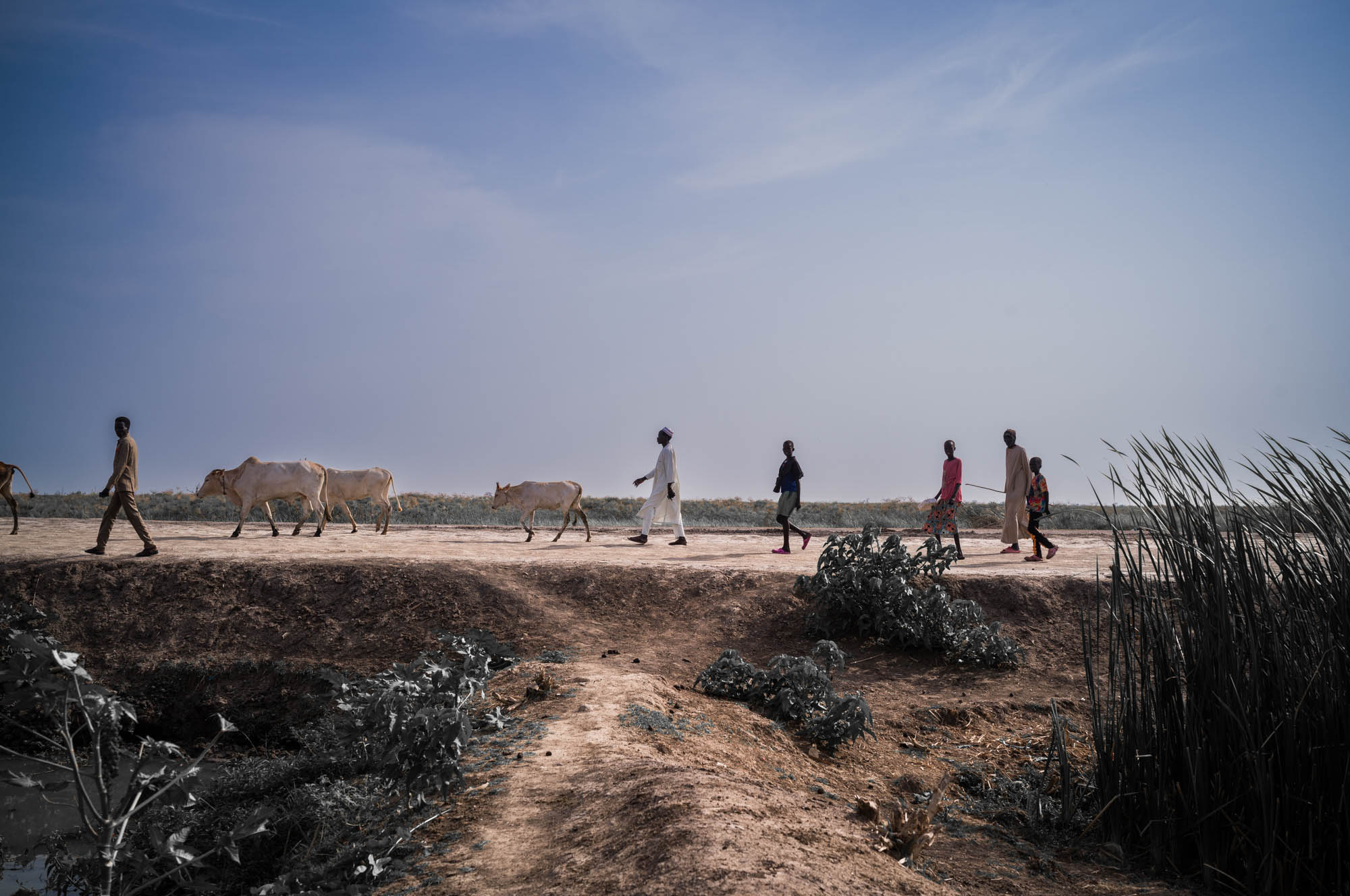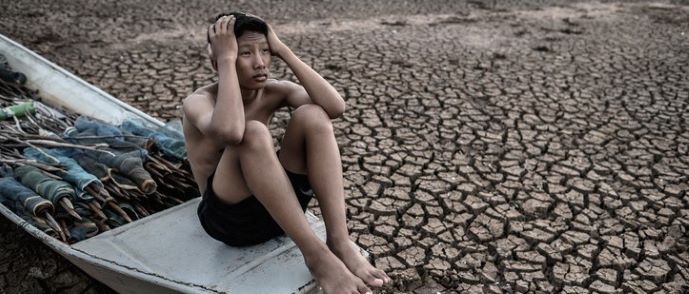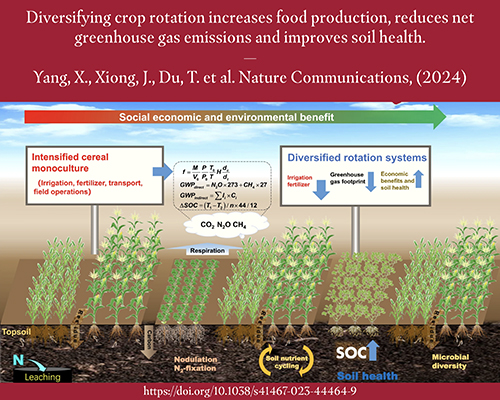Report on Tourism Diversification in Bosnia-Herzegovina: A Response to Climate Change and a Driver for Sustainable Development
Executive Summary
Mountain resorts near Sarajevo, Bosnia-Herzegovina, are undergoing a strategic transformation from winter-centric to year-round tourist destinations. This shift is a direct adaptation to the impacts of climate change, specifically reduced snowfall, and aligns with several key United Nations Sustainable Development Goals (SDGs). By developing summer tourism offerings, the region is working to build a more resilient and sustainable economic model, promoting decent work, responsible tourism, and climate action.
Alignment with Sustainable Development Goals (SDGs)
SDG 13: Climate Action – Adapting to a New Environmental Reality
The core driver of this tourism strategy is a direct response to the tangible effects of climate change. The region’s actions are a clear example of climate adaptation.
- Decreased Snowfall: Tourism officials acknowledge that reliable snow accumulation is now primarily occurring at altitudes above 2,500 meters, which is higher than the peaks of local resorts like Jahorina (1,906m) and Bjelasnica (2,067m).
- Strategic Adaptation: The pivot to summer tourism is a necessary adaptation to ensure the long-term viability of these mountain communities in the face of changing weather patterns.
- Climate Refuge: The resorts offer a refuge from increasingly frequent and intense heat waves in traditional coastal destinations, where temperatures often exceed 40°C, providing a sustainable alternative for tourists.
SDG 8: Decent Work and Economic Growth – Building a Resilient Year-Round Economy
The diversification of tourism activities contributes directly to fostering sustained, inclusive, and sustainable economic growth for the local population.
- Reducing Seasonality: By developing a robust summer season, resorts create year-round employment, moving away from an economic model dependent on a single, increasingly unreliable ski season.
- Job Creation: The expansion of activities such as guided hiking, mountain biking, and ATV tours creates new jobs and business opportunities for local entrepreneurs like tour guides and service providers.
- Economic Diversification: This strategy strengthens the local economy, making it more resilient to climate and economic shocks, and promotes the “future of tourism” through a sustainable, year-round appeal.
SDG 11 & SDG 12: Sustainable Communities and Responsible Consumption
The development of mountain tourism promotes sustainable community development and encourages more responsible patterns of consumption and production in the tourism sector.
- Alleviating Overtourism: By providing an attractive alternative, the Sarajevo region helps to distribute tourist flows more evenly, mitigating the pressures of overtourism seen in coastal cities like Dubrovnik.
- Sustainable Infrastructure: The development focuses on leveraging existing infrastructure (e.g., ski lifts) and promoting low-impact activities like hiking, which aligns with sustainable production and consumption patterns.
- Building Resilient Communities: This approach supports the economic and social fabric of mountain communities, making them more inclusive, safe, and resilient.
Strategic Implementation and Current Status
Key Initiatives Since 2017
Following several winters with poor snowfall, a concerted effort to expand summer offerings began in the mountains that hosted the 1984 Winter Olympics.
- Operation of ski lifts was extended to year-round for scenic viewing.
- New trails for hiking and biking were established and promoted.
- Tours and rentals for All-Terrain Vehicles (ATVs) were introduced to attract a wider range of visitors.
Observed Outcomes
- Positive Summer Trends: Despite acknowledged challenges in official record-keeping, tourism officials and local business operators report a clear and growing trend in summer visitor numbers.
- Favorable Climate: Tourists are attracted to the pleasant summer mountain temperatures, which typically range from 24°C to 30°C.
- Business Growth: Tour operators have noted “fabulous” summer business, which helps to offset losses from “bleak” winter seasons marked by snow shortages.
Comparative Analysis and Future Outlook
Contrast with Coastal Tourism Models
The strategy in Bosnia-Herzegovina’s mountains stands in contrast to the challenges faced by mature coastal destinations in neighboring Croatia.
- Growth vs. Management: While Sarajevo’s resorts are focused on attracting more visitors, Dubrovnik is implementing measures to manage overtourism, including limiting cruise ship passengers and restricting traffic.
- Economic Disparity: Tourism in Croatia accounts for up to 20% of the nation’s GDP, and Dubrovnik alone recorded nearly two million overnight stays in seven months, highlighting the significant economic potential for growth in the Bosnian tourism sector.
Long-Term Vision
The ultimate objective is to establish the region as a year-round tourist destination. This long-term strategy, shared by tourism authorities in both Bosnia and Croatia, is essential for sustainable growth and resilience in the face of global climate change, fully aligning with the principles of the Sustainable Development Goals.
Analysis of Sustainable Development Goals in the Article
1. Which SDGs are addressed or connected to the issues highlighted in the article?
-
SDG 8: Decent Work and Economic Growth
- The article focuses on the tourism industry as a key economic driver for the Sarajevo region. The shift from winter to summer tourism is a strategy to ensure sustained economic activity and growth for mountain resorts, creating and preserving jobs in the face of climate change. It discusses the profitability of tourism and compares the economic impact in Bosnia to that in Croatia, where tourism contributes significantly to the GDP.
-
SDG 11: Sustainable Cities and Communities
- The article discusses how mountain resort communities near Sarajevo are adapting to become more resilient and sustainable. By diversifying their tourism offerings, they are ensuring their long-term viability. It also touches upon the issue of over-tourism in Dubrovnik, highlighting the need for sustainable management of tourist flows to protect cultural and natural heritage, which is a key aspect of making communities sustainable.
-
SDG 13: Climate Action
- This is a central theme of the article. The primary reason for the shift in tourism strategy is explicitly stated as a consequence of climate change: “there is no escaping the fact that snow is now likely to fall and accumulate at altitudes above 2,500 meters.” The move to promote summer tourism is a direct adaptation strategy to strengthen resilience against the impacts of a warming climate.
-
SDG 15: Life on Land
- The article is set in mountain ecosystems (Jahorina and Bjelasnica). The development of year-round tourism, including “hiking, biking and ATV trails,” directly impacts these terrestrial ecosystems. The long-term success of this tourism model depends on the sustainable use and conservation of these mountain environments.
2. What specific targets under those SDGs can be identified based on the article’s content?
-
Target 8.9: “By 2030, devise and implement policies to promote sustainable tourism that creates jobs and promotes local culture and products.”
- The entire article describes the efforts of the Sarajevo tourism board and local resorts to implement a new strategy for sustainable, year-round tourism. The goal is to increase the area’s appeal, which in turn creates jobs (e.g., quad tour leaders) and ensures the economic viability of the region.
-
Target 13.1: “Strengthen resilience and adaptive capacity to climate-related hazards and natural disasters in all countries.”
- The mountain resorts are adapting their business models in direct response to a climate-related hazard (lack of snow). By pivoting to summer tourism, they are building economic resilience to the effects of climate change, which threatens their traditional, snow-dependent operations.
-
Target 15.4: “By 2030, ensure the conservation of mountain ecosystems, including their biodiversity, in order to enhance their capacity to provide benefits that are essential for sustainable development.”
- The article discusses developing tourism in the Jahorina and Bjelasnica mountains. The sustainable development of this region relies on the health and appeal of its mountain ecosystems. The expansion of trails and tours implies a need to manage these activities to ensure the conservation of the natural environment that attracts tourists in the first place.
3. Are there any indicators mentioned or implied in the article that can be used to measure progress towards the identified targets?
-
Tourism’s contribution to GDP:
- The article mentions that “tourism accounts for up to 20% of the country’s gross domestic product” in Croatia. This serves as a benchmark and implies that a similar metric could be used to measure the success of Bosnia’s new tourism strategy. This is relevant to Target 8.9.
-
Number of tourist stays/visitors:
- The article contrasts the number of overnight stays in Dubrovnik (“nearly two million overnight stays in the first seven months of 2025”) with those in the Sarajevo region. An increase in summer overnight stays in the mountain resorts would be a direct indicator of the success of their adaptation strategy (Target 13.1) and sustainable tourism promotion (Target 8.9).
-
Seasonality of tourism:
- The stated goal to “extend the season” and become a “year-round tourist destination” is a key theme. Progress could be measured by comparing the number of summer visitors to winter visitors over time, with the goal of reducing the gap and dependence on a single season. This indicates adaptation to climate change (Target 13.1).
-
Diversification of tourist offerings:
- The article mentions the addition of “hiking, biking and ATV trails and tours” and the year-round operation of ski lifts. The number and variety of non-winter activities offered can serve as an indicator of the resorts’ adaptation and implementation of a sustainable, year-round tourism model (Targets 8.9 and 13.1).
4. Summary Table of SDGs, Targets, and Indicators
| SDGs | Targets | Indicators |
|---|---|---|
| SDG 8: Decent Work and Economic Growth | 8.9: Promote sustainable tourism that creates jobs. |
|
| SDG 13: Climate Action | 13.1: Strengthen resilience and adaptive capacity to climate-related hazards. |
|
| SDG 15: Life on Land | 15.4: Ensure the conservation of mountain ecosystems. |
|
Source: newsday.com







